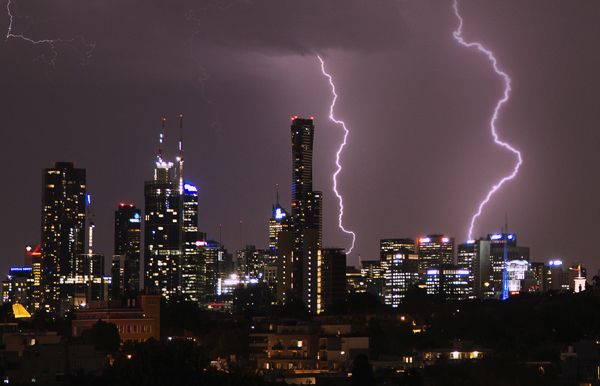
Thunderstorms can be spectacular and yet terrifying events in nature. The loud noises, and bright flashes of light of a fierce thunderstorm can send chills down the spine of even the most heroic humans. So, spare a thought for our pet pals who might need extra comfort during these overwhelming moments of nature.
We can all understand that sporadic flashes of light and booming, crashing sounds during thunderstorms would trigger unease among pets. Many pets have highly sensitive hearing – in fact, dogs are said to have four times better hearing than humans! – which means the unexpected loud cracks of thunder can cause them distress and anxiety.
However, the science buffs among us will appreciate that electrostatic changes and barometric pressures also have a role to play in the way our fur friends react to thunderstorms. Some pets may be more attuned to changes in atmospheric pressure and electrostatic charges associated with thunderstorms, which can make them feel restless. Similarly, the drop in barometric pressure before a storm can cause physical pain in some pets, particularly those with joint issues.
Helping your pet through thunderstorms:
- Ensure pets are micro-chipped and have an ID Tag – Frightened dogs often run away during thunderstorms and are unable to find their way home. Having up-to-date contact information via their micro-chip and ID tag will ensure pets are reunited with their owner much more quickly.
- Create a safe space – Provide an inside space that pets can retreat to during storms. The space should include familiar items with smells the pet recognises. These items could include beds, blankets, toys and food.
- Avoid leaving pets alone – Pets often feel increased comfort during thunderstorms with their pet parent around, going about usual activities. Avoid leaving your pet on their own if you know a thunderstorm is expected, and remain calm and keep to routine to ease stress in your pet.
- Seek advice from your vet – If you feel your pet displays overly big reactions during thunderstorms, they may have a noise phobia. Signs of a phobia could include pacing, panting, whining, trying to escape and causing destruction. Speak to your vet about your pet’s reactions during thunderstorms to get an individual assessment.
If you’re leaving your fur kid with a pet sitter and suspect your pet may feel unease during thunderstorms, inform the sitter so that they can adequately prepare and help ease your pet’s anxiety.